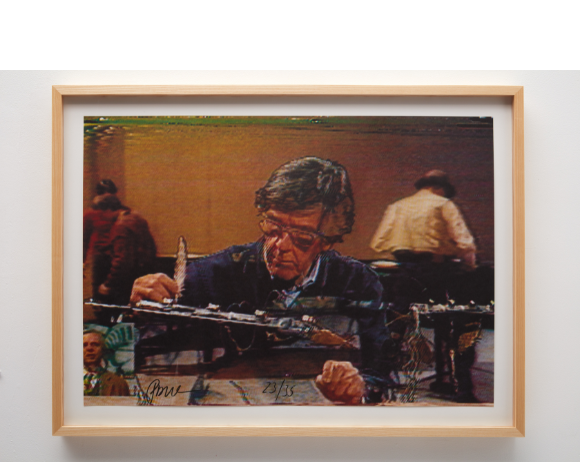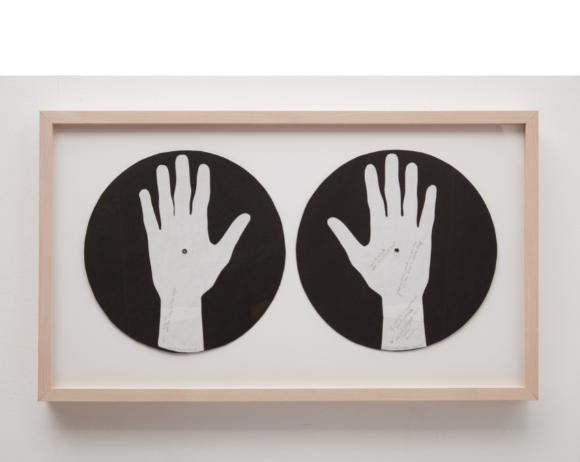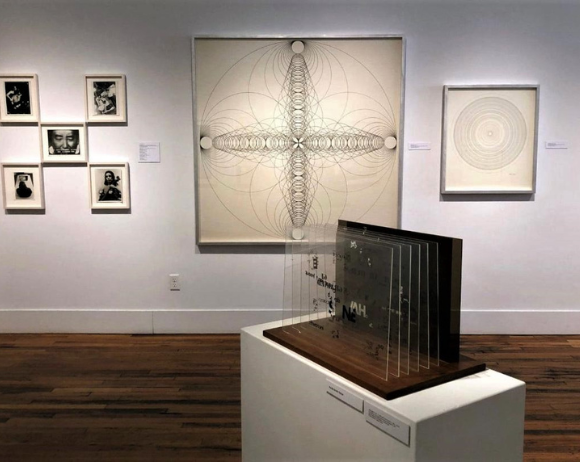DON'T BLAME IT ON ZEN
THE WAY OF JOHN CAGE AND FRIENDS
OCTOBER 28, 2022 - MAY 7, 2023
A leading voice of the post-war avant-garde, John Cage (1912-1992) was a composer, philosopher, poet, visual artist, amateur mycologist, and longtime Buddhist devotee, whose enormous influence throughout the arts cannot be overstated. This interactive and multidisciplinary exhibition explores Cage's work and legacy, featuring works by artists that both knew and worked with him, as well as younger artists who in different ways have followed his footsteps, such as Maria Chavez, Philip Corner, Andrew Deutsch, Ann Hamilton, Christian Marclay, Aki Onda, Yoko Ono, Nam June Paik, and Robert Rauschenberg, among many others.
UPCOMING EVENTS CONNECTED TO THIS EXHIBITION
MOCA Movie Night: A ZEN LIFE - D.T. Suzuki 3.15
Ideas of Our Time Lecture: John Cage & Friends with Clark Lunberry 3.23
Widely revered as an innovator in the non-standard use and ”preparation” of musical instruments, indeterminacy, chance-based, and electroacoustic music, John Cage was perhaps both the most provocative and the most influential American composer of the 20th century. His ideas would spread well beyond the music field however. In John Cage's approach to composition, whether in performance or the visual arts, the role of the artist was not to dictate the outcome of a work, but to give space for the influence of chance.
John Cage encountered Zen Buddhism in the early 1950s, through the works of Aldous Huxley and the lectures and writings of Japanese Buddhist scholar and thinker Daisetsu Teitarō Suzuki. He taught at Black Mountain College in the summers of 1948 and 1952 and was in residence there during the summer of 1953. While at BMC, he organized what has been credited as the first-ever “Happening”, Theater Piece No. 1 (1952), that put to use many of Cage's ideas of chance and indeterminacy. The interdisciplinary, multi-layered, performance event took place in BCM's communal dining hall with Cage lecturing on music and reading from the ninth-century Chinese Buddhist classic Huang-Po Doctrine of Universal Mind, while now legendary participants, including artists Robert Rauschenberg, composer David Tudor, poets Charles Olson and M.C. Richards, and the choreographer/dancer (and Cage's lifelong partner) Merce Cunningham, performed independently. These “Happenings,” that abandoned the traditional concept of stage-audience, and occur without a sense of definite duration, would become commonplace in the development of contemporary art in the following decades.
According to Cage, “What I do, I do not wish [to be] blamed on Zen, though without my engagement with Zen I doubt whether I would have done what I have done.” As the exhibition title and John Cage's own words make clear, he wished only “to free Zen of any responsibility for [his] actions,” yet its profound influence continues to be seen, heard, and experienced through his work and the work of his friends and countless followers.
Curated by Jade Dellinger, Director of the Bob Rauschenberg Gallery at FSW, for the Black Mountain College Museum + Art Center, Asheville, NC, where the exhibition was first presented in September 2021. Curator for MOCA Ylva Rouse.
ABOUT BLACK MOUNTAIN COLLEGE
It was at Black Mountain College that Merce Cunningham formed his dance company, John Cage staged his first "happening," and Buckminster Fuller built his first dome. Although it lasted only twenty-four years (1933-1957) and enrolled fewer than 1,200 students, Black Mountain College launched a remarkable number of the artists who spearheaded the avant-garde in America of the 1960s. Faculty members included Anni Albers, Josef Albers, Ilya Bolotowsky, John Cage, Harry Callahan, Merce Cunningham, Buckminster Fuller, Walter Gropius, Clement Greenberg, Lou Harrison, Franz Kline, Willem de Kooning, Jacob Lawrence, Robert Motherwell, Roger Sessions, Ben Shahn, Aaron Siskind, Esteban Vicente, and Stefan Wolpe. Among their students were Ruth Asawa, John Chamberlain, Ray Johnson, Kenneth Noland, Robert Rauschenberg, Dorothea Rockburne, Cy Twombly, and Susan Weil. Literature teachers included Robert Creeley, Robert Duncan, Charles Olson, and M.C. Richards, with students Fielding Dawson, Ed Dorn, Francine du Plessix Gray, Joel Oppenheimer, Arthur Penn, John Wieners, and Jonathan Williams.
Black Mountain College History
The Art Story: Black Mountain College




